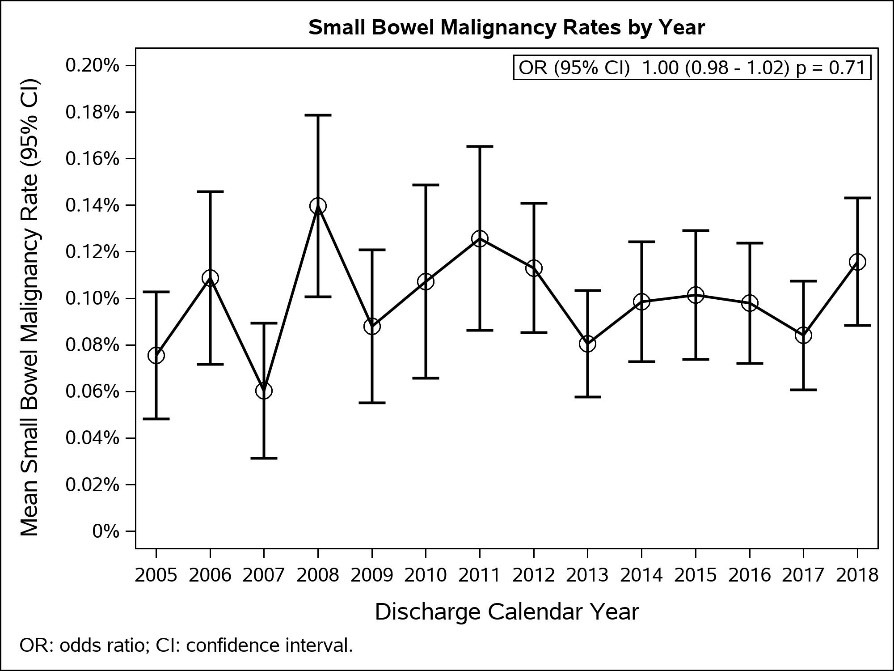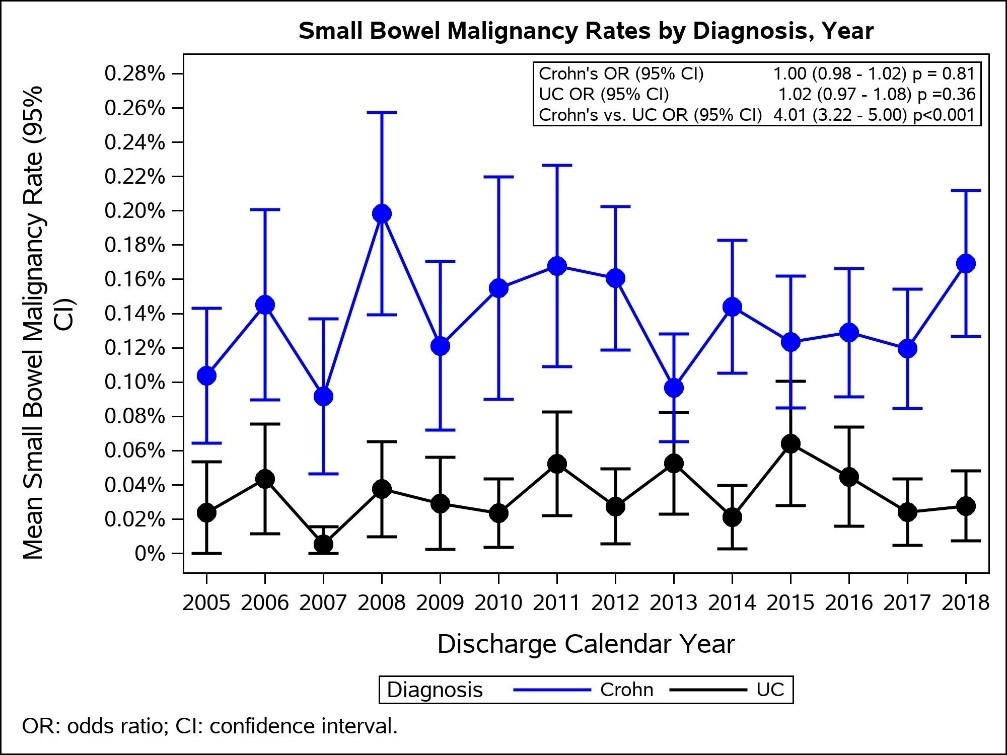PREVALENCE OF INFLAMMATORY BOWEL DISEASE-RELATED SMALL BOWEL MALIGNANCY IN THE UNITED STATES HAS REMAINED STABLE IN THE MODERN BIOLOGIC ERA: AN EPIDEMIOLOGIC STUDY UTILIZING THE NATIONAL INPATIENT SAMPLE FROM 2005-2018
Joshua Sommovilla*, Xue Jia, Tracy L. Hull, David Liska, Amy L. Lightner, Benjamin L. Cohen, Benjamin Click, Stefan D. Holubar
Colon and rectal surgery, Cleveland Clinic, Cleveland, OH
Background
Crohn's disease (CD) increases the risk for small bowel malignancies with worse survival outcomes compared to matched populations. Adequate inflammation control may reduce this risk; however, little is known about shifting epidemiology of small bowel malignancies in inflammatory bowel disease (IBD) in the biologic and small molecule era. We aimed to characterize, compare, and assess longitudinal changes in the prevalence of small bowel malignancy in patients with Crohn's disease and ulcerative colitis (UC) during the biologic era.
Methods
Adult admissions with IBD were identified from the National Inpatient Sample from 2005 to 2018. We created separate cohorts for patients with diagnoses of CD and UC with or without a secondary diagnosis of small bowel malignancy. The national estimate for small bowel malignancy rate was estimated using the sampling weights provided by the Healthcare Cost and Utilization Project. The prevalence of small bowel malignancy over time in the CD and UC, as well as the IBD cohort overall served as the primary outcome. Proportions were compared by disease, and trends over time were assessed.
Results
The overall rate of small bowel malignancy in IBD patients during the study period varied between 0.08% and 0.12% and did not significantly change over time in either the overall (p=0.71, Figure 1), CD (between 0.09 and 0.17%, p=0.81) or UC (between 0.01 and 0.02%, p=0.36) cohorts. The rate of small bowel malignancy was significantly greater in the CD cohort compared to the UC cohort (p<0.01, Figure 2) across the entire time period.
Conclusions
Despite increased therapeutic options and evolving treatment paradigms, the prevalence of small bowel malignancy in hospitalized patients with IBD, and CD in particular, has remained stable over the past 15 years in the United States. Further study is required to determine the impact of other risk factors, medical treatment paradigm, and radiographic monitoring on the development of small bowel malignancy in IBD patients.
Figure 1- Small bowel malignancy rate in IBD patients (NIS, 2005-2018)
Figure 2- Small bowel malignancy rate in CD and UC by year, 2005-2018
Back to 2022 Posters
